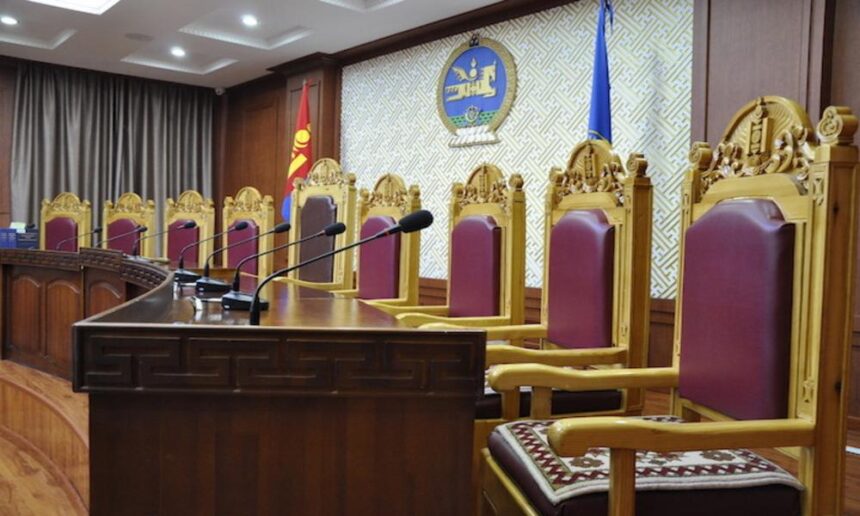On 12 October 2017, Mr. Battulga, the President of Mongolia, withdrew his nomination for a vacancy for one of the 9 members of the “Tsets of the Constitution” (“the Tsets”) following a public outcry. The huge public interest in the candidacy can be understood as a reflection of the open struggle for power between the Tsets and the Parliament in recent years. This column covers a brief introduction to the institutional challenges revolving around the Tsets.
The Tsets as the ‘Constitutional Court’
The Tsets is the body responsible for constitutional control in Mongolia. The nature of this institution has been much disputed over the past 25 years.
There are different types of proceedings before the Tsets. Except for a very few cases, the proceedings before the Tsets have been initiated exclusively by citizen’s petition. The Supreme Court of Mongolia has referred matters to the Tsets with questions on constitutional conformity only six times since 1992, according to a 2016 study.[1]
Neither the citizen’s petition nor the Supreme Court referrals are comparable with the constitutional court proceedings in countries such as Germany, Austria or France, although Mongolian scholars sometimes write that the Constitution of 1992 was influenced by these countries. In practice, the Tsets does not resolve disputes between the Parliament and the Government or the central and provincial governments on competence issues. Moreover, the Tsets does not reverse an unconstitutional court decision and remit it to a competent court if it has the opinion that fundamental rights of the complainant are violated. In other words, the German or Austrian type of individual complaint procedure does not exist in Mongolia.
Petition about constitutional uniformity
The Tsets petition proceeding is unique. From a European perspective it is difficult to envisage. One should, however, try to forget about the notions of popular or parliamentary sovereignty or even judicial protection and imagine instead a parliamentary petition committee that is, however, not a part of the Parliament itself.
In practice, the Tsets proceedings are launched by citizens’ petition (a complaint or report). An ordinary citizen may refer to the Tsets either with a complaint about breach of his own fundamental rights (citizen’s complaint) or he may submit a report to the Tsets for the defence of the ‘public’ interest but not of his own fundamental rights (citizen’s report). Over the past 25 years, the citizen’s petition has been submitted to the Tsets primarily on grounds of violation of the Constitution by a legal provision of a law passed by the Parliament, according to the 2016 study.The Tsets does not review the constitutional conformity of laws before their promulgation. Generally, the Tsets only decides on constitutional conformity when the relevant law is already in force.
In practice, the Tsets first issues an opinion on the constitutional conformity of a legal provision, when a proceeding was launched based on a citizen’s petition. The opinion of the Tsets confirming constitutional non-conformity has the effect of suspension of the provision and the Tsets remits the opinion to the Parliament. The Parliament has principally a legal obligation to decide on the opinion of the Tsets within 15 days. If the Parliament disagrees with the opinion, the Tsets makes a final decision and it may repeal the legal provision.Struggle between the Tsets and the Parliament
Under the given institutional provisions, it is predictable that the relationship between the Tsets and the Parliament has been a challenge to the Mongolian state. It is common that the Parliament does not respect the deadline of 15 days. In its 25 years of history, the Tsets has succeeded to issue final decisions in only 59 disputes, according to the 2016 study. Moreover, the study shows that the Parliament does not even respect in the legislative procedure the existence of previous final decisions by the Tsets. The power of the Tsets as a body of constitutional control is hence very limited. Outlook
The current situation is distressing when one considers the public finance issues and widespread extreme poverty in Mongolia. Why should poor Mongolians finance members, staff and accommodation of the Tsets if it has produced only 59 final decisions in 25 years? Why should the state pay for an institution which is not capable of fulfilling its mission? Moreover, there is a state institution called the “National Human Rights Commission”. Why the state is paying to two separate institutions dealing with human rights complaints? One should further ask why the Tsets should have the power to repeal a legal provision? Did the Mongolian people elect their representatives in the Parliament through a direct election? Is it justified that nine members of the Tsets decide on the validity of a law which was passed by the 76 members Parliament? How can one know that the so-called ‘citizens’, who submit a ‘report’ to the Tsets, are really intending to defend the interests of the ‘public’? If so, are they capable of understanding complex issues, although the legal provision that is attacked by them does not affect their rights directly? Last but not least, are the current proceedings before the Tsets further contributing to legal uncertainty?
In the short term, the selection of a recognisable candidate for a member of the Tsets seems to be important at least to Mr. Battulga, the President of Mongolia, who is surely interested in maintaining public support at the beginning of his mandate. In the long run, the country may not carry on with institutions such as the Tsets. Overall, one should ask if the country needs institutions that are capable of responding to changes by creating and redefining the fundamental values of the society and that protects individuals and businesses from arbitrary state actions. If yes, what kind of institution or state re-organisation would be possible?
2017.10.28












